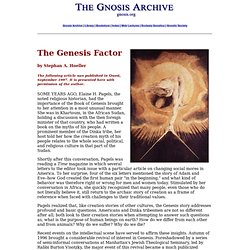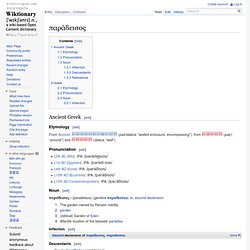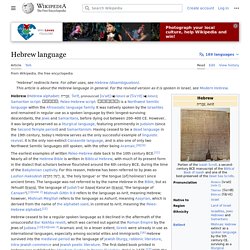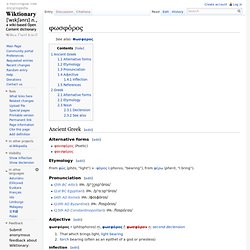

The Genesis Factor. Gnosis Archive | Library | Bookstore | Index | Web Lectures | Ecclesia Gnostica | Gnostic Society by Stephan A.

Hoeller The following article was published in Quest, September 1997. It is presented here with permission of the author. SOME YEARS AGO, Elaine H. Shortly after this conversation, Pagels was reading a Time magazine in which several letters to the editor took issue with a particular article on changing social mores in America. Pagels realized that, like creation stories of other cultures, the Genesis story addresses profound and basic questions.
Recent events on the intellectual scene have served to affirm these insights. Robert Alter, one of the most recent translators of Genesis, said: "Moyers has hit upon an idea whose time has come. Moyers's panelists included Catholics, Protestants, Jews, Muslims, a Hindu, a Buddhist, and several agnostics. Had the recent revival of interest in Genesis occurred fifty or sixty years ago, this omission might have been understandable. Serpent seed. For the Christian concept of the "seed of the serpent" see Seed of the Woman A sculpture of Adam, Eve and the Serpent at Notre Dame de Paris.

Sacred history. World tree. From Northern Antiquities, an English translation of the Prose Edda from 1847.

Painted by Oluf Olufsen Bagge. World tree. Russian ornament. 19th century. Norse mythology[edit] In Norse mythology, Yggdrasil is the world tree. Siberian culture[edit] The world tree is also represented in the mythologies and folklore of Northern Asia and Siberia. Genesis creation narrative. The Genesis creation narrative is the creation myth of both Judaism and Christianity.

It is made up of two parts, roughly equivalent to the first two chapters of the Book of Genesis. In the first part, Genesis 1:1 through Genesis 2:3, Elohim, the generic Hebrew word for God, creates the world in six days, then rests on, blesses and sanctifies the seventh day. God creates by spoken command ("Let there be... "), suggesting a comparison with a king, who has only to speak for things to happen,[2] and names the elements of the cosmos as he creates them, in keeping with the common ancient concept that things did not really exist until they had been named.
Composition[edit] Sources[edit] Although tradition attributes Genesis to Moses, some biblical scholars believe that it, together with the following four books (making up what Jews call the Torah and biblical scholars call the Pentateuch) is "a composite work, the product of many hands and periods. " Παράδεισος.
Ancient Greek[edit] Etymology[edit] From Avestan 𐬞𐬀𐬌𐬭𐬌𐬛𐬀𐬉𐬰𐬀 (paiṛidaēza, “walled enclusure, encompassing”), from 𐬞𐬀𐬌𐬭𐬌 (paiṛi, “around”) and 𐬛𐬀𐬉𐬰𐬀 (daēza, “wall”).

Pronunciation[edit] (5th BC Attic): IPA: /paráde͜esos/(1st BC Egyptian): IPA: /parádiːsos/(4th AD Koine): IPA: /paráðisos/(10th AD Byzantine): IPA: /paráðisos/(15th AD Constantinopolitan): IPA: /paɾáðisos/ Hebrew language. Hebrew /ˈhiːbruː/ (עִבְרִית ʿIvrit [ʔivˈʁit] ( ) or [ʕivˈɾit] ( )) is a West Semitic language of the Afroasiatic language family.

Historically, it is regarded as the language of the Hebrews/Israelites and their ancestors, although the language was not referred to by the name Hebrew in the Tanakh. [note 2] The earliest examples of written Paleo-Hebrew date from the 10th century BCE, in the form of primitive drawings.[9] Hebrew had ceased to be an everyday spoken language by around 200 CE, and survived into the medieval period only as the language of Jewish liturgy and rabbinic literature. Modern Hebrew is one of the two official languages of Israel (the other being Arabic), while Classical Hebrew is used for prayer or study in Jewish communities around the world today. Etymology[edit] The modern word "Hebrew" is derived from the word "Ibri" (plural "Ibrim"), one of several names for the Jewish people.
Mathers table. Mathers Table from the 1912 edition of The Kabbalah Unveiled.

The Mathers table of Hebrew and "Chaldee" letters is a tabular display of the pronunciation, appearance, numerical values, transliteration, names, and symbolism of the twenty-two letters of the Hebrew alphabet appearing in The Kabbalah Unveiled, S.L. MacGregor Mathers' late 19th century English translation of The Kabbalah Denudata, itself a Latin translation by Christian Knorr von Rosenroth of the Zohar, a primary Kabbalistic text. Φωσφόρος. Ancient Greek[edit] Alternative forms[edit] Etymology[edit] From φῶς (phōs, “light”) + -φόρος (-phoros, “bearing”), from φέρω (pherō, “I bring”).

Pronunciation[edit] (5th BC Attic): IPA: /pʰɔ͜ɔspʰóros/(1st BC Egyptian): IPA: /pʰoːspʰóros/(4th AD Koine): IPA: /ɸosɸóros/(10th AD Byzantine): IPA: /fospóros/(15th AD Constantinopolitan): IPA: /fospóɾos/ Adjective[edit] φωσφόρος • (phōsphoros) m, φωσφόρος f, φωσφόρον n; second declension That which brings light, light bearingtorch bearing (often as an epithet of a god or priestess)